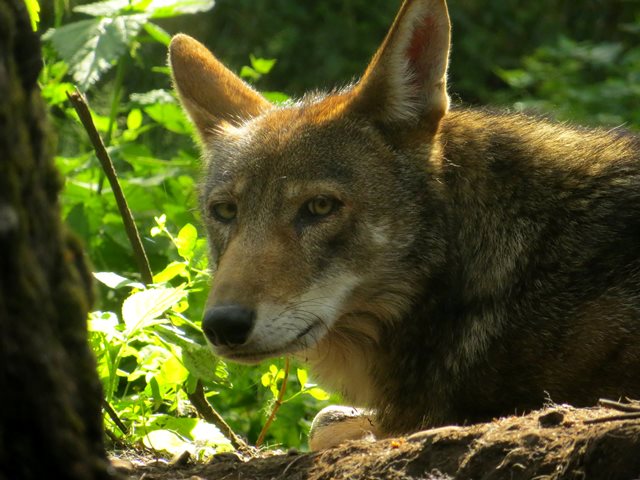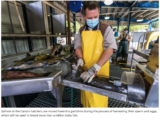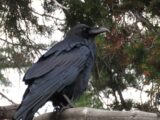
By Glynn Wilson –
The U.S. Fish and Wildlife Service has announced it will begin implementing a series of new actions based on the latest scientific information to save the endangered red wolf from extinction.
The best science now available shows the captive population is not secure for the foreseeable future. With only 29 breeding pairs in captivity, the population is not large enough to sustain itself and will decline over time without significant help.
“The recovery team identified this as a priority,” according to the announcement. “To secure the captive population, we must essentially double it to at least 400 wolves. Currently, there are slightly more than 200 in captivity. The number of breeding pairs must increase to a minimum of 52.”
The announcement comes after a two-year, two-step evaluation of the entire red wolf recovery program, including the evaluation of the captive population and the non-essential, experimental population in Eastern North Carolina that began in 2014 with a peer-reviewed program assessment by the Wildlife Management Institute. This review was expanded last June to include the recommendations of a red wolf recovery team that examined feasibility of recovery in the wild, population viability, red wolf taxonomy, the historical range and human dimensions.
“The Service commissioned these numerous studies, and the updated research and information coming from a diverse group of experts was invaluable to us in making the management decisions we’re announcing today,” Cindy Dohner, the Service’s Southeast Regional Director, said Monday.
This team completed a report with a series of options earlier this month. The steps announced today by the Service are guided by that work.
First, the Service will move quickly to secure the captive population of red wolves, which according to research is not sustainable in its current configuration.
Second, the Service will determine where potential new sites exist for additional experimental wild populations by October 2017 and ensure these determinations will comply with all environmental rules and include public engagement.
Third, the Service will propose to revise the existing experimental population rule to apply only to the Dare County Bombing Range and Alligator River National Wildlife Refuge, where stable packs exist on federal lands. This proposed action will change the scope of and goals for the experimental population and is expected to be completed by December 2017.
These proposed changes will go through appropriate environmental review and public comment.
Finally, by October 2017 the Service working with others will complete a comprehensive Species Status Assessment and five-year status review for the red wolf, building on the foundation of work accomplished over the past two years and past history. This will guide the Service’s recovery planning in the future.
“We believe the actions we’ve outlined today chart the correct path to achieve success,” Dohner said. “We need everyone’s help ensure this species is around for future generations. We’re on the right road, but we have a great deal of work to do with our state partners, landowners, conservation groups and others. We are looking forward to the collective effort and everyone’s engagement.”
The Service recognizes questions remain about the validity of the red wolf as a listable species under the Endangered Species Act. The five-year status review the Service will examine whether the red wolf is a valid, listable entity and whether it is appropriately classified as an endangered species.
The red wolf’s historical range has been a relatively consistent source of debate given different interpretations and limited historical specimens. The Wildlife Management Institute concluded that an accurate depiction of the red wolf’s range includes North Carolina along with all or parts of a significant part of the Southeast United States, which is larger than originally identified. The recovery team generally agrees with WMI’s conclusion.
To learn see the U.S. Fish and Wildlife Service website on the Red Wolf Recovery Program.













